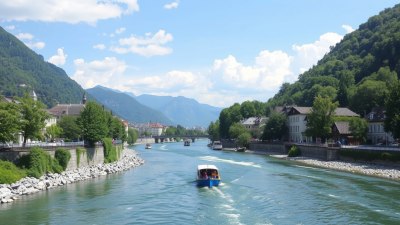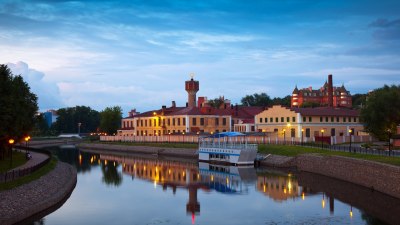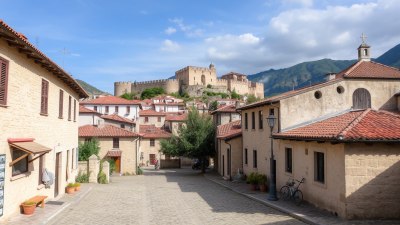How to Find the Hidden Layers of History in Any Destination
Explore techniques to uncover the rich, hidden histories of destinations you visit.

Traveling is a way to broaden horizons, experience diverse cultures, and, often, to escape the daily grind. But what if you could find deeper meaning and context in the places you visit? Uncovering the hidden layers of history in any destination goes beyond typical tourist attractions and presents a richer narrative of the locale.
Before you pack your bags, it's important to set the right mindset. Approach your travel with curiosity and the desire to learn. Ask yourself questions: What stories lie beneath the surfaces of this city or region? How have past events shaped its present culture? This mindset will open up paths to new experiences and discoveries.
1. Research Before You Go
Begin by researching your destination. Books, documentaries, and online resources can provide context about historical events, local legends, and significant figures. Pay attention to historical timelines and major events that may have impacted the area. If you're visiting a city, consider looking into its founding stories, settlements, conflicts, and social movements.
Utilize platforms such as Google Scholar, JSTOR, or local library archives if you're looking for academic papers or historical documents. These resources help create a foundation of understanding about your destination. Written histories often highlight key moments that have influenced a community—economic booms, devastating plagues, and cultural shifts.
2. Talk to Locals
While guides and brochures can offer valuable information, engaging with locals often yields firsthand accounts and stories not found in history books. Strike up conversations with residents at coffee shops, markets, or community events. Ask about their families, the history of the place, and if they have any stories to share about their own experiences or ancestors.
Additionally, local historians or tour guides may provide specialized knowledge about the area's history and can lead you to lesser-known sites and attractions. Consider looking for community historians or participatory local projects where residents invite visitors to learn about historical aspects of their community.
3. Visit Museums and Historical Sites
Museums are treasure troves of information, often holding artifacts and exhibitions that narrate the area's rich past. Look for smaller, lesser-known museums which might highlight niche aspects of history, such as local craftsmanship or unique cultural traditions. A museum dedicated to the history of a specific community may offer insights into local customs, legends, or lesser-known historical events.
When visiting historical sites, don’t rush through them. Take your time to read signs, watch documentaries in the visitor centers, and participate in guided tours where available. Consider visiting during quieter times or off-season to avoid crowds and engage deeper with both the guides and artifacts present.
4. Explore the Architecture
The architecture of a destination holds many stories, often reflecting the era, culture, and social dynamics at the time of construction. Different architectural styles can indicate various influences—colonial, modernist, or a blend of local and foreign designs. Pay attention to the buildings around you, noting their materials and design intricacies.
If you're in a city with a rich architectural tapestry, consider taking an architecture-focused walking tour. These specialized tours often delve into the stories behind structures, touching on influential personalities and periods that shaped a community's architectural legacy.
5. Go Off the Beaten Path
Often, the most interesting historical stories come from places that aren't listed in travel brochures. Seek out less commercialized areas, like older neighborhoods, abandoned historical sites, or smaller towns. Visiting places where tourists typically don’t tread can reveal stories and histories that are rarely discussed.
Utilize apps or guides that cater to local secrets, or even explore online forums for suggestions of hidden gems in the destination. The beauty of exploring off the beaten path is that you may stumble upon experiences or interactions you never anticipated, broadening your understanding of the local history.
6. Participate in Cultural Events
Cultural events are vibrant windows into the heritage of a destination. Festivals, heritage days, and local markets often highlight traditional customs, foods, and crafts that carry historical significance. By immersing yourself in local culture through participation, you'll gain firsthand experiences that readings may not convey.
Every culture has its rhythm and pulse. Engaging in communal activities fosters bonds with locals and enriches your travel experience. If you have the opportunity, attend workshops or classes that teach traditional craftwork, language, or cooking—many roots back to the community's history.
7. Utilize Technology and Social Media
In this digital age, smartphones and social media can be incredibly powerful tools for uncovering history. Use location-based apps to directory historical landmarks and follow local history hashtags on platforms like Instagram or Twitter to discover hidden stories and recommendations from residents.
Additionally, many cities offer historical apps or augmented reality experiences that provide contextual history as you explore various sites. Engaging with these technological enhancements can offer a dynamic way to interact with the place’s past while navigating its present.
8. Read Local Literature
Literature often reflects the cultural backdrop of a community, offering insights into its past and present. Seek out novels, poetry, and essays by local authors to gain perspective on how history shapes the identity of the destination.
Local stories or folklore can reveal insights into socio-political dynamics, traditions, and historical events significant to the community. Check local bookstores or libraries, or even consider reading online if the physical copies are scarce. Literature doesn’t just inform; it can also move and inspire, capturing the essence of a place through its narratives.
9. Observe Everyday Life
Sometimes, history can be felt in the daily life of locals—how they interact, what language they speak, and even the foods they eat. Take a moment to observe the local lifestyle, noting rituals, social habits, and communal spaces. You might discover that community traditions or daily routines provide insight into historical influences, socio-economic backgrounds, and cultural shifts.
Engaging actively in everyday activities, from local dining to shopping at open-air markets, you can unravel layers of history intertwined within the customs and daily interactions of the community. Do not underestimate the value of simply taking a step back and absorbing the lived reality of the destination.
10. Prepare to Document Your Findings
As you uncover layers of history in your travels, consider documenting your findings. Keep a travel journal, take photographs, and collect stories along the way. Not only does this deepen your engagement, but it also serves as a personal record of your inquiries into the past of every destination you visit.
On return from your travels, reflect on your experiences—what struck you most? What new perspectives did you gain? Through documentation, you can carry these insights forward, preserving the richness of your journeys and possibly sharing them to inspire others.
In summary, the allure of travel is amplified when one is able to find and appreciate the hidden layers of history beneath the surface. From conscientious research and conversations with locals to engaging with culture and observing community life, every step can lead to deeper understanding and connection with the places you visit. With these techniques in hand, you are better equipped to embark on journeys that reveal more than just picturesque landscapes or famous landmarks—a journey that unfolds the fascinating and multifaceted history woven into every destination.











